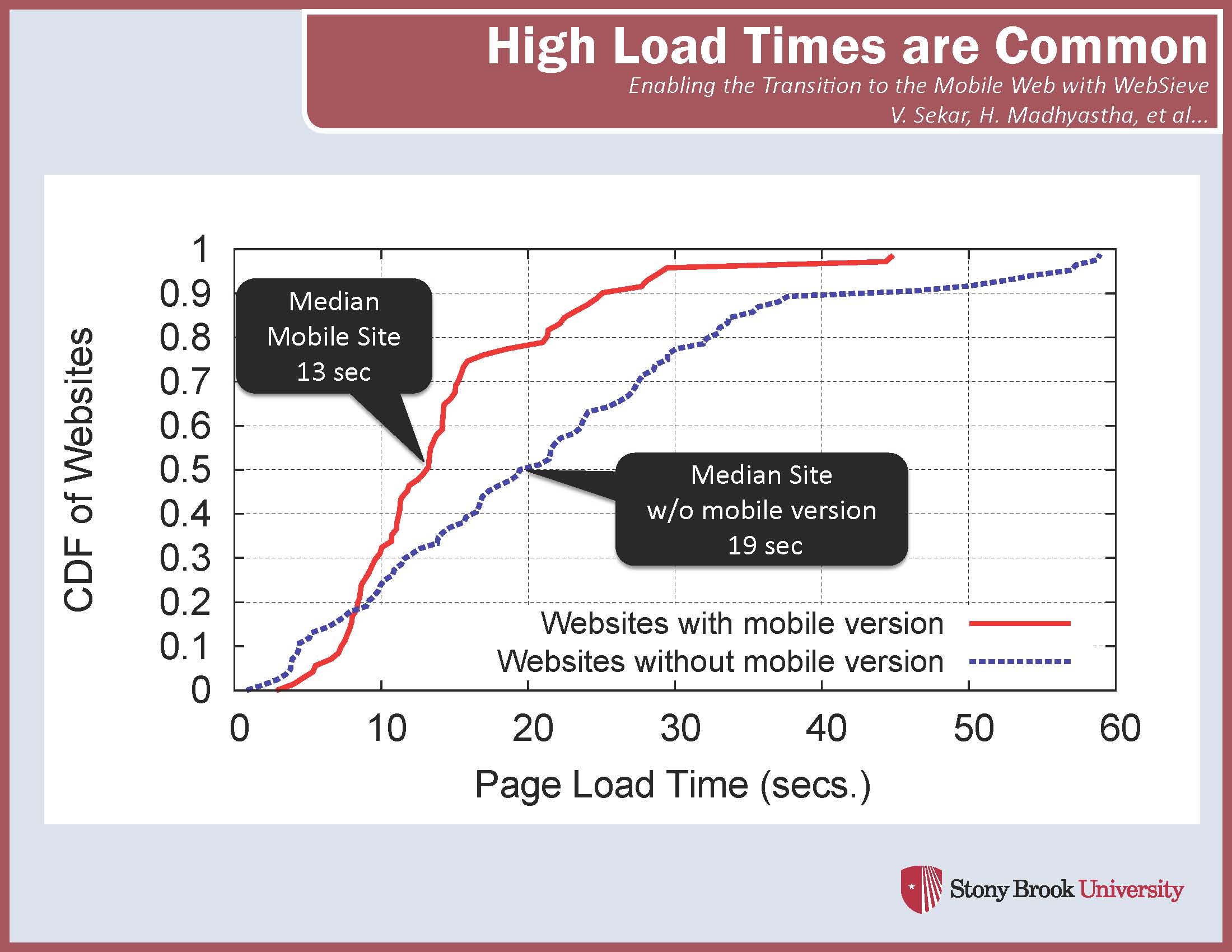Stony Brook, NY, April 29, 2013
In the coming years, accessing the web using a mobile device is expected to surpass laptop and desktop platforms. Often users find mobile access frustrating and label their experience as negative. To solve the challenge of optimizing speed and quality when visiting a website using a mobile device, researchers from the University of California Riverside (UCR) and Stony Brook University (SBU) teamed to study mobile web optimization.

Vyas Sekar from SBU and Harsha Madhyastha from UCR are working on designing a system for automatically creating mobile friendly websites. The award is part of Google’s Faculty Research Award program which funds “exciting and game-changing research” in computer science and technology. The program provides unrestricted gifts to support faculty like Sekar and Madhyastha around the world in their research to develop creative technological solutions.
Web page load time is a key measure of performance that impacts both users and website providers. Moreoever, search engines like Google are even known to incorporate site speed into search rankings and consequently the load time of a website has a direct effect on search engine optimization (SEO). Websites with high loading times risk losing potential revenue and customers, who will move on to a site with optimized webpages.
The problem of high page load times is especially severe on mobile devices. As part of the initial research, researchers and graduate students on both measured the performance of several thousand websites from Quantcast’s list of the top million websites, and then identified those with mobile –optimized web pages. During this study, researchers determined:
- On average it can take almost 11 seconds to load a site over a 3G network
- Even sixty-percent of “mobile-optimized” websites still take more than 10 seconds to load
To address this problem, Professors Madhyastha and Sekar are proposing a new architecture called “WebSieve” in which mobile devices can prioritize and fetch “important” objects that are critical to a user’s experience as well as a provider’s business model. Essentially, the backend generates a compact fingerprint that summarizes the key properties of the web page such as the dependency structure; load time information for objects on the page; and object utilities as perceived by the website provider.
Realizing this vision, however, entails several design, implementation challenges that Sekar and Madhyastha in collaboration with students at SBU and UCR. This includes extracting complex interdependencies between objects; understanding the intrinsic utility that users and website providers derive from web page objects; and developing an efficient algorithm to select the subset of objects that should be “fetched”.
“Through this research, small web providers will be able to transition and support mobile devices without investing significant resources,” said Dr. Sekar.
